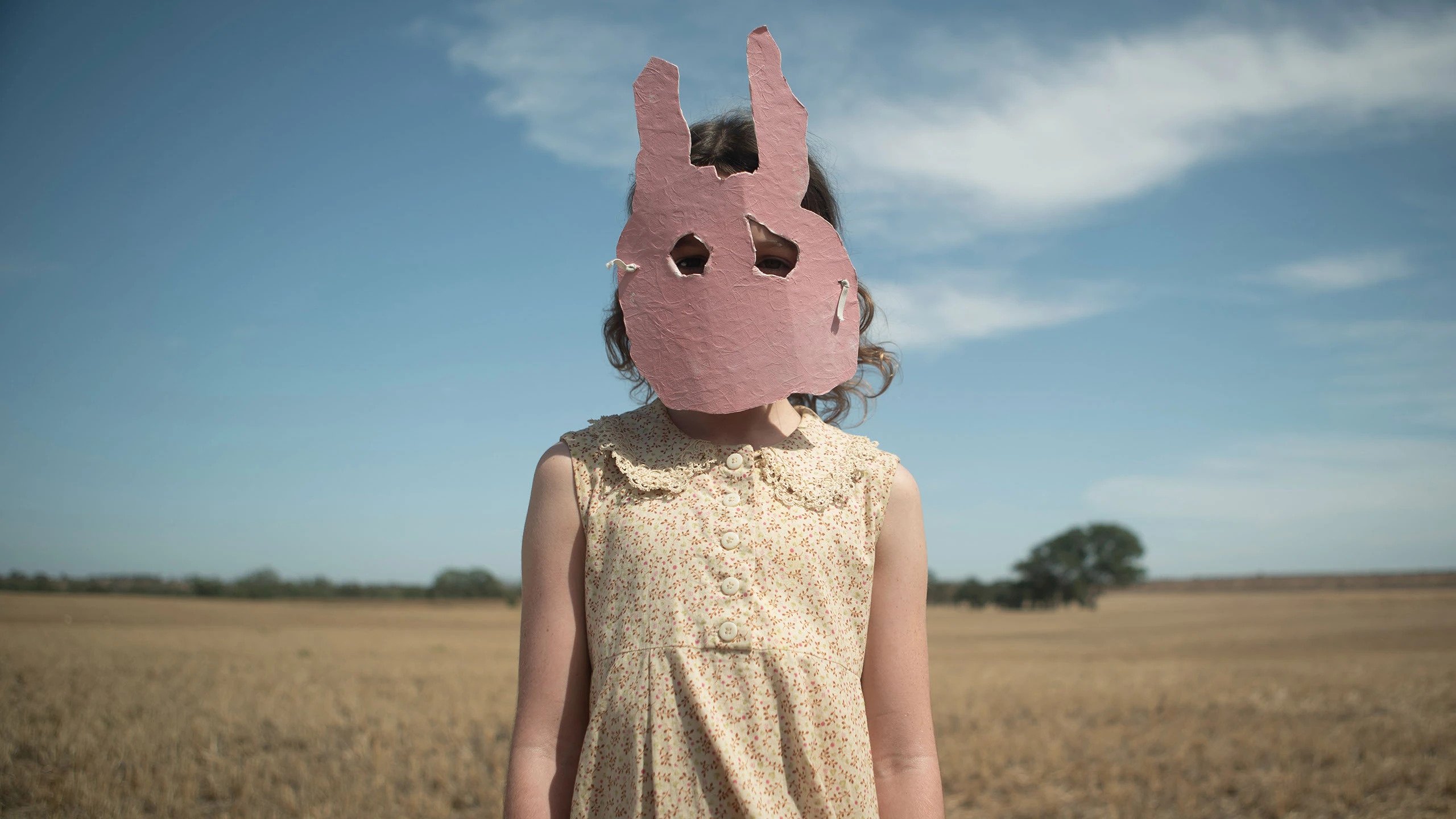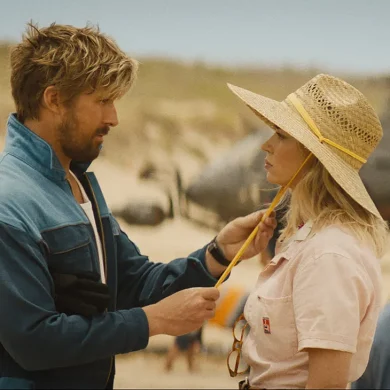Mystery narratives are difficult beasts to wrangle onto film. The writer and director must stay one step ahead of the audience, working to ensure that essential information is revealed at the right time, culminating in a rug-pulling reveal that ties the narrative together. As such, a solid mystery film can fall apart if the resolution doesn’t make sense or leaves little to no explanation for the preceding events, ultimately nullifying the brilliance that has already taken place. Director Daina Reid and writer Hannah Kent’s feature debut Run Rabbit Run is one such example of a mystery film that impresses in its opening acts, but stumbles in its close.
Ambiguity is in the air as single mum Sarah (Sarah Snook) prepares for her daughter Mia’s (Lily LaTorre) seventh birthday. Driving home from school, Mia asks if her father Pete (Damon Herriman) is coming for dinner, and if he’s bringing Denise (Naomi Rukavina). “Yes,” Sarah replies. “Is Joan coming?”, Mia asks, to which Sarah responds no. When Mia comments that she misses Joan (Greta Scacci), Sarah quickly retorts that she can’t miss someone she’s never met. Sagely, Mia responds “I miss people I’ve never met all the time.” As they pull into the driveway, they notice that the carport is mysteriously open, and a white rabbit sits on the doorstep. Mia scoops it up, thinking it’s a birthday present.
The rabbit becomes a constant aspect of their lives, creeping around the house silently, yet like many of the mysterious tendrils that erupt from Kent’s shaggy script, its purpose is never truly explained. Instead, its existence plays out in a discordant tone alongside the many other the modern horror tropes that Reid employs to try and amplify the core mystery of the film. Maybe it’s just the physical manifestation of Mia’s nickname, ‘bunny’, or maybe it’s the visual representation of the hollow and emptiness that exists within Sarah? We’re never given a defined answer, and it almost feels like Reid and Kent don’t mind that that’s the case.
A fractious relationship between mother and child is the most prominent trope, one that is heightened by Mia’s insistence to be called ‘Alice’ and to demand that she visit Joan, who is ‘missing her’. It’s not until near the close of the second act that we learn that Alice was the name of Sarah’s sister who went missing when she was seven. Naturally, this unsettles Sarah intensely, leading to continued arguments between the two with Sarah shouting “don’t do that!” as Mia responds sternly “my name is Alice.” Initial arguments are intense, but due to their frequency they become increasingly muted experiences, dulling the impact of the explosive and violent mother-daughter duels.
The inherent tragedy of the character of Sarah is the manner that those close to her continually separate themselves from her life. Long before we meet her, she loses her husband through divorce, then her father leaves her through death, amplifying the unexplained tension that Sarah has with her mother whom she loses twice – once through a personal divide, and then through dementia. Finally, we see Sarah struggle with the realisation that she’s possibly losing her daughter Mia to the spirit of her lost sister. This is an interesting motif to build a character from, and as expected, Sarah Snook gives a solid performance throughout. Yet, Kent’s script starts Sarah on a heightened level of anxiety, giving Snook precious little room to move as the narrative ratchets up its tension. Sarah starts as someone who is hypervigilant, almost immediately shifting into a yelling and screaming mode where she stays for the rest of the film, leading to a character who, while strained by the tragedy in her life, is decidedly one-note.
Where Kent’s script shines is with the dual characters of Mia and Alice, performed with shocking immediacy by Lily LaTorre. As Mia, LaTorre endures the wrath and fear of Sarah, and pushes back against that fury in a profound manner. An early brief scene where LaTorre’s Mia-as-Alice and Greta Scacci’s Joan are reunited contains a level of emotional complexity and tragedy that strikes straight to the heart, a tone that the rest of the film yearns for.
Mark Bradshaw and Marcus Whale score use of tortured string instruments amplifies the aching and pained feeling of Sarah’s life, a tone that is matched by Bonnie Elliott’s always brilliant cinematography. Here, Elliott captures the twilight of regional Australia perfectly, creating an atmosphere that creates an otherworldly feel. Additionally, Bradshaw and Whale’s score, when paired with Elliott’s lens, transforms the domestic home into a cavernous dungeon, transforming innocuous beige walls into threatening architecture.
For most of its runtime, Run Rabbit Run hangs on the precipice of brilliance, with Daina Reid’s direction conjuring an anticipatory air of intrigue and expectation that something monumental is about to occur. It’s only in its conclusion that the film tumbles over the edge, opting for ambiguity and uncertainty rather than a defined conclusion, making this an unsatisfying mystery that I cannot heartily recommend. At its close, Run Rabbit Run left me feeling like I’d been on a search with someone who cannot truly recall what it is that they’re looking for, as if we’d dug holes in the backyard, pulled clothes out of cupboards, and ransacked the ceiling space, with each new area promising the answers we were looking for, only to overturn everything and find nothing but dust and depression. It’s not a great feeling, no matter how interesting it felt in the moment.
Director: Daina Reid
Cast: Sarah Snook, Lily LaTorre, Greta Scacchi
Writer: Hannah Kent




